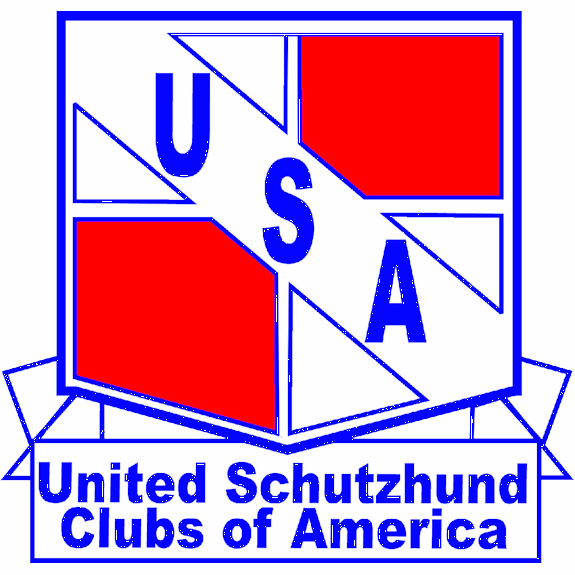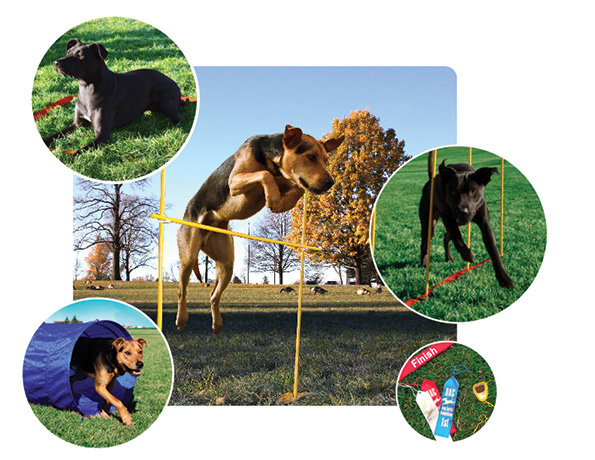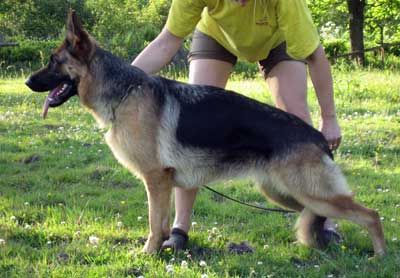Thursday, September 4, 2014
Professional German Shepherd Directory: German Shepherd Schutzhund/IPO Clubs and Organizat...
Professional German Shepherd Directory: German Shepherd Schutzhund/IPO Clubs and Organizat...: Schutzhund (German for "protection dog") is a dog sport that was developed in Germany in the early 1900s as a breed suitabili...
German Shepherd Schutzhund/IPO Clubs and Organizations
| Schutzhund
(German for "protection dog") is a dog sport that was developed in
Germany in the early 1900s as a breed suitability test for the German
Shepherd Dog. The test would determine if the dog displayed the
appropriate traits and characteristics of a proper working German
Shepherd Dog. Today, it is used as a sport where many breeds other than
German Shepherd Dogs can compete, but it is a demanding test for any dog
that few can pass. Traits of Schutzhund dogs Schutzhund tests dogs of all breeds for the traits necessary for police-type work. Dogs that pass Schutzhund tests should be suitable for a wide variety of tasks: police work, specific odor detection, search and rescue, and many others. The purpose of Schutzhund is to identify dogs that have or do not have the character traits required for these demanding jobs. Some of those traits are:
History In response to political forces in Germany, in 2004 the Verein für Deutsche Schäferhunde (SV) and the Deutscher Hundesportverein (DHV) made substantial changes to Schutzhund. The DHV adopted the Fédération Cynologique Internationale (FCI) rules that govern IPO titles, so that at least on paper the SV and DHV gave up control of the sport to the FCI. The DHV changed the name of the titles from "SchH" (Schutzhund) to "VPG" (Vielseitigkeitsprüfung für Gebrauchshunde which roughly translates Versatility examination for working dogs). The SV has retained the "SchH" title names, but otherwise conforms to the DHV/FCI rules. Description There are three schutzhund titles: Schutzhund 1 (SchH1), Schutzhund 2 (SchH2), and Schutzhund 3 (SchH3). SchH1 is the first title and SchH3 is the most advanced. Additionally, before a dog can compete for an SchH1, he must pass a temperament test called a B or BH (Begleithundprüfung, which translates as "traffic-sure companion dog test"). The B tests basic obedience and sureness around strange people, strange dogs, traffic, and loud noises. A dog that exhibits excessive fear, distractibility, or aggression cannot pass the B and so cannot go on to schutzhund. The Schutzhund test has changed over the years. Modern Schutzhund consists of three phases: tracking, obedience, and protection. A dog must pass all three phases in one trial to be awarded a schutzhund title. Each phase is judged on a 100-point scale. The minimum passing score is 70 for the tracking and obedience phases and 80 for the protection phase. At any time the judge may dismiss a dog for showing poor temperament, including fear or aggression.
Training Schutzhund training, like the sport itself, has evolved over the years. The definitive description of Schutzhund training in the first 50 years of the sport is Col. Konrad Most's Dog Training: A Manual, 1910 By modern standards, Most's training is very harsh and possibly abusive. Despite this, it is also structured, consistent, and in many ways conforms to more recent ideas on learning theory. Over time, the more brutal techniques fell out of use and few trainers still follow Most's program. In 1981, Helmut Raiser published Der Schutzhund (English trans. by Armin Winkler, 1999 (no ISBN)), which radically changed Schutzhund protection training. In the US, the next great change in Schutzhund training is marked by the 1991 publication of Schutzhund Theory & Training Methods by Susan Barwig and Stewart Hilliard. Also see TOP WORKING DOGS, A Schutzhund Training Manual by Dr. Dietmar Schellenberg, first published in 1982. With the fifth edition in A reliable source for training information is a good Schutzhund club. The overwhelming majority of Schutzhund training is done by owner/handlers at local clubs. There are very few clubs in the US, making books and videos a vital source of information in that country. In the US, most clubs are affiliated with the American Working Dog Federation (AWDF), United States Boxer Association (USBA), American Working Malinois Association (AWMA), United Schutzhund Clubs of America (USA), Deutscher Verband der Gebrauchshundsportvereine (DVG), or German Shepherd Dog Club of America-Working Dog Association (GSDCA-WDA). Schutzhund clubs tend to be small, 20 or less members, because there is a limit to the number of dogs that can be trained in one session. Clubs often provide only limited formal assistance with tracking and obedience. To a certain extent, the clubs exist to provide the specialized resources needed to train the protection phase. However, a legitimate club will not permit a member to train only protection. Usually the more experienced members are willing to help the novice with tracking and obedience, though this is typically somewhat informal in the US. Another function of Schutzhund clubs is to identify dogs that should not be trained in Schutzhund. Schutzhund is a challenging test of a dog's character, and not every dog, or even every GSD, is up to the challenge. The training director of the club has a responsibility to the dog, handler, club, and society to constantly evaluate every dog and to decline to train any dog with questionable character or working ability. Training a dog that does not really want to work is stressful and frustrating for all parties involved. Schutzhund clubs regularly hold public trials, providing the opportunity for dogs to earn titles and for handlers to assess their training progress. A tiny number of dedicated handlers have trained their dogs to title readiness strictly from books and videos. This is unlikely to succeed in most cases, because it is almost impossible to train the protection phase without a helper. A good club should be considered a necessity for Schutzhund training. Organizations Schutzhund is governed by a number of organizations. The FCI, the international umbrella organization for all things dog related, sets the rules for IPO titles. (IPO is the FCI name for sport Schutzhund titles.) The AZG sets the rules for Schutzhund for all breeds. The AZG is one of the component organizations of the VDH, the all breed kennel club of Germany. The German Shepherd Dog Club of Germany, the SV, is a member of the VDH and arguably the most powerful influence on the sport. Although the AZG formally sets the rules, the AZG does nothing with respect to Schutzhund without the approval of the SV. Still, the SV has great influence in the FCI and is probably still the most powerful influence on the sport. The DVG is an all-breed dog sport organization in Germany that organizes clubs and trials and has branches in Canada and The United States. The largest Schutzhund organization in the US is the United Schutzhund Clubs of America, called USCA. In spite of its name, USCA is a German Shepherd Dog breed club. The Working Dog Association is a branch of another GSD breed club, the German Shepherd Dog Club of America, which also sponsors clubs and trials. There are a small number of DVG clubs in the United States, various other breed organizations that are involved in Schutzhund, and the American Working Dog Federation (AWDF), which is an umbrella organization. There are other breed specific Schutzhund clubs such as the United Doberman Club. In the case of the Doberman the AKC will not allow you to add Schutzhund titles to your dog's pedigree unless they are earned with the United Doberman Club. This barely scratches the surface. | ||||||||
| Classifieds in category: 17 | ||||||||
| ||||||||
 | ||||||||
Wednesday, September 3, 2014
Kyjen Dog Agility Starter Kit with Dog Tunnel Weave Pole High Jump Obstacles, Large, Red
- Enhaces dogs abilities.
- Obstacle course.


Product Description
Kit contains all the tools you need to practice agility with dogs
Enjoy the benefits of practicing agility with your dog! Our Dog Agility Starter Kit has all the tools you need to begin an agility training program. It's a fun way to teach and practice obedience, and a great workout to boot! The Dog Agility Starter Kit includes a 24" diameter open tunnel along with a pause box, high jump, weave poles, start/finish line, stop watch, and awards.Tuesday, September 2, 2014
Professional German Shepherd Directory: Dog Treadmill
Professional German Shepherd Directory: Dog Treadmill: Customized programs One size fits all Adjustable angles Compact, portable folding design Several health benefits for your dog Pr...
Dog Treadmill
- Customized programs
- One size fits all
- Adjustable angles
- Compact, portable folding design
- Several health benefits for your dog

Product Description
LF 3.1 Features: -Customizable Programs.-The DogPACER is made for all dogs. One size fits all.Because of folding technology the DogPACER dog treadmill is extremely light and portable.
Many people have dogs of various sizes and we have run hundreds of dogs from 1lb to 179 lbs..-Pet Weight up to 179 lbs (80 kg).-Speed : 0.5 - 7.5 mph (0.1 increments).-Running Area: 71'' x 16.5''.-1- 5 degrees.-2- 6.5 degrees.-3- 7.5 degrees.-4- 9 degrees. Specifications: -Electric 110 v . Dimensions: -Dimensions Folded: 8.5'' H x 22'' W x 42.28'' D.-Dimensions Open: 46.18'' H x 27.16'' W x 76.77'' D.-Product Weight: 84.4 lbs (37.7 kg).-Box Dimensions: 10'' H x 25.6'' W x 46.45'' D.
Subscribe to:
Comments (Atom)




